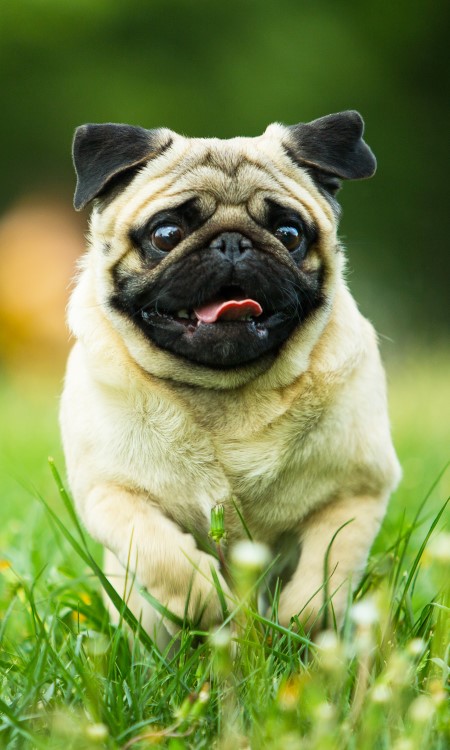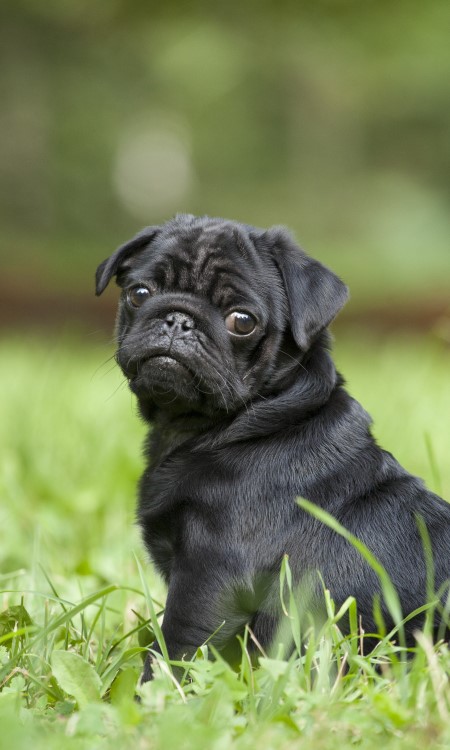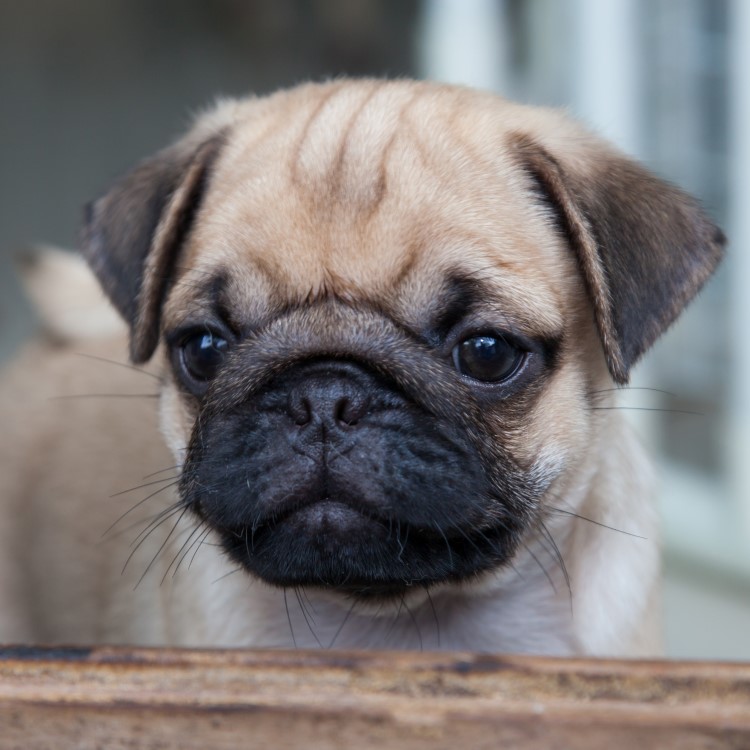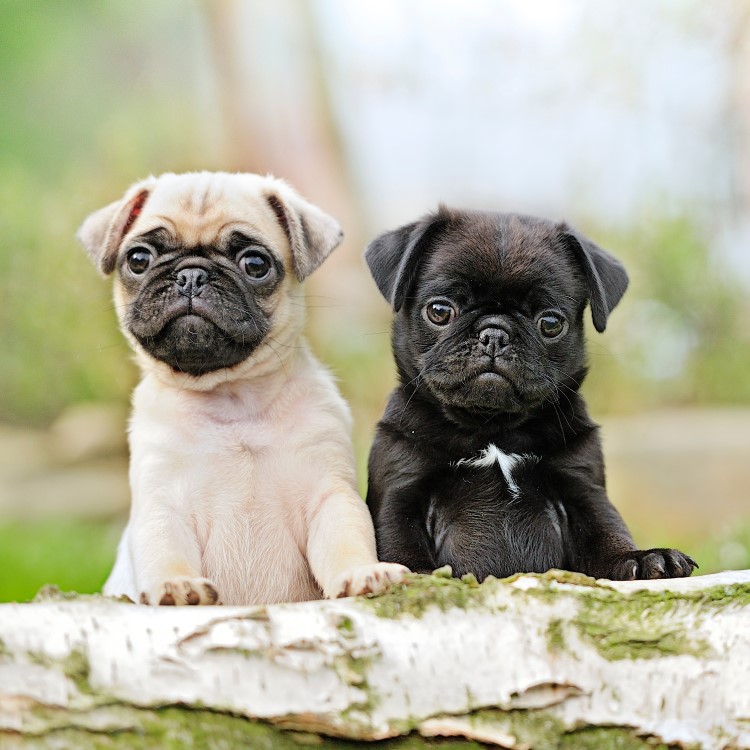The Pug Personality
The motto often used to describe Pugs is ‘multum in parvo’, translating to a lot in a little, meaning there is a lot of personality in one compact, stout package. The ‘clowns of canines’ Pugs are goofy, child-like, and playful, with a great sense of humour.
Born to be a companion and lapdog, they thrive of human affection and attention, always a loyal member of the family unit. They love to be with their owners as much as possible whether it’s relaxing on the couch and watching a movie, going for a walk or snuggling up in bed. As a result, a Pug may become very unhappy if left alone for prolonged periods of time.
Pugs are also highly intelligent however wilful, and therefore can have a stubborn side which often comes out in training. Do not expect them to hunt or retrieve voluntarily, as this is not typically in their nature.
The breed is a great watchdog but are not known to be ‘yappy’, making it easy to live in smaller or confined spaces. They often greet visitors with a quick and short bark, before allowing them inside with their signature snorts and grunts.

 Greencross Vets
Greencross Vets 





